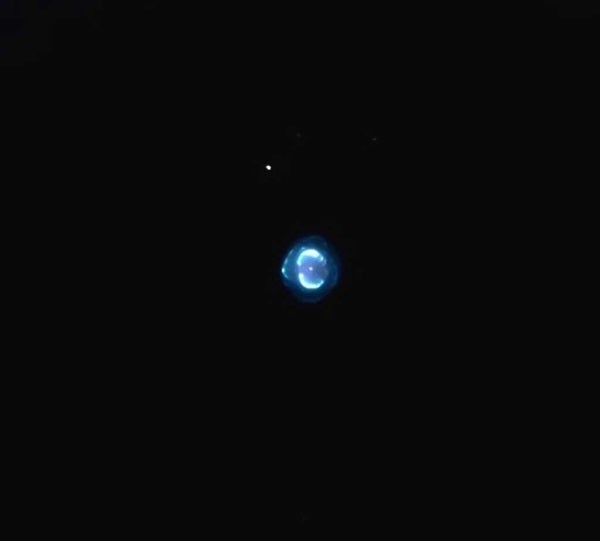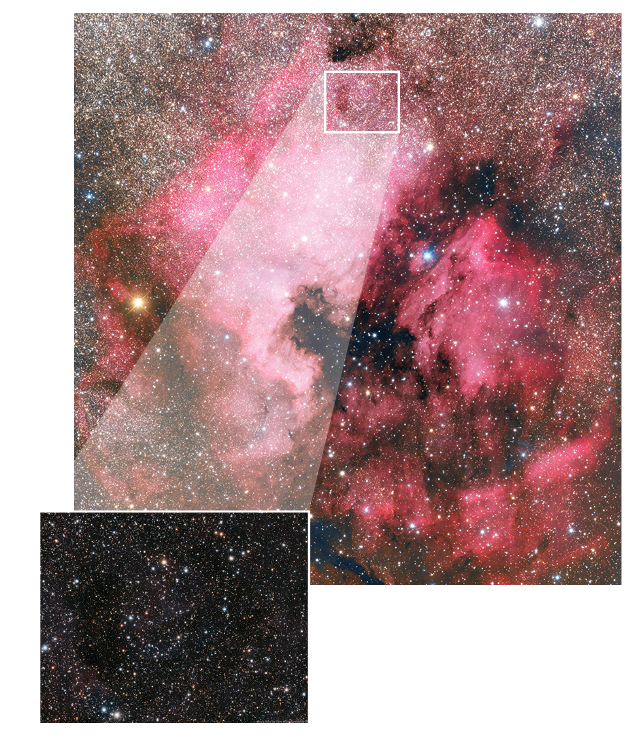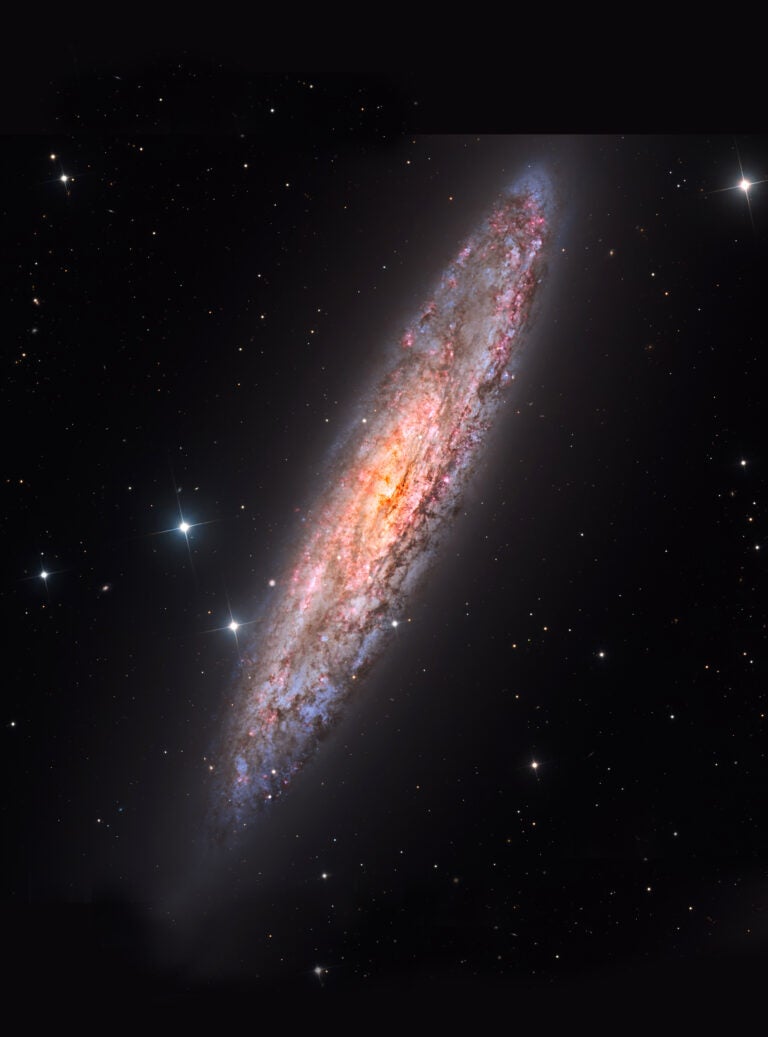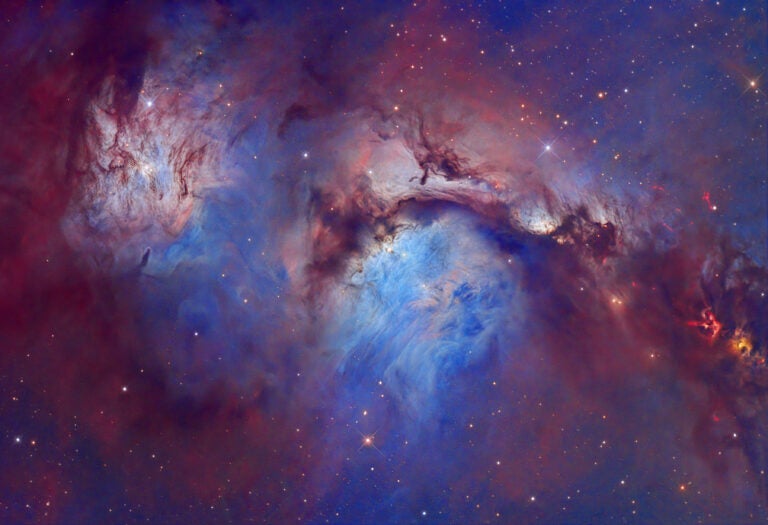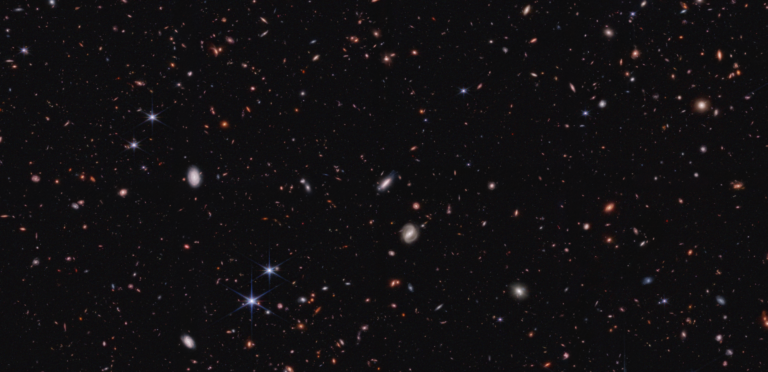
Each week, Astronomy magazine Senior Editor Michael E. Bakich, a master at explaining how to observe, posts a podcast about three objects or events you can see in the sky.
Targets for December 4–11, 2014
Small telescope: Open clusters NGC 1444 and NGC 1513
Large
telescope: Emission nebula NGC 1491
Large
telescope: Barred spiral galaxy NGC 1512
Expand your observing at Astronomy.com
StarDome
Check out Astronomy.com’s interactive StarDome to see an accurate map of your sky. This tool will help you locate this week’s targets.
The Sky this Week
Get a
daily digest of celestial events coming soon to a sky near you.
Observing Basics videos
Spend some time in our in-house observing expert’s “little corner of the universe.”
A pair of star groups in Perseus
This week’s small-telescope targets are two open clusters in the constellation Perseus. First is NGC 1444. To find it, look 3.5° northwest of magnitude 4.3 Lambda (λ) Persei.
It shines at magnitude 6.6 and measures 4′ across. This cluster is basically the magnitude 6.7 star SAO 24248 and about 10 other much fainter suns. The overall effect is of a bright cluster, however.
The second of the two clusters is NGC 1513. It shines at magnitude 8.4 and measures 12′ across. You’ll find this nice cluster 1.4° northwest of magnitude 4.1 Mu (μ) Persei, or 1° southeast of Lambda Persei.
Through a 4-inch telescope at a magnification around 100x, you’ll see some three dozen stars spread evenly across the field of view. An 8-inch scope will increase your star count to 50.
A cloud of glowing hydrogen
This week’s first large-scope object is emission nebula NGC 1491, which also lies in Perseus.
To locate this nebula, point your scope 1.1° north-northwest of Lambda Persei. A 10-inch telescope equipped with a nebula filter clearly shows NGC 1491’s bright fan shape. Start with a magnification of about 75x to keep the object vibrant, then gradually increase the power.
The nebula appears brightest on the western edge and fades gradually toward the more diffuse eastern side. A 16-inch scope reveals striations that extend away from the southern tip. Don’t expect to see a nebula that even approaches the cataloged size of 25′. Astroimagers may record an object that large, but NGC 1491 scarcely spans 4′ through the eyepiece.
The bar closes at dawn
This week’s second large-telescope target is barred spiral galaxy NGC 1512 in the far-southern constellation Horologium the Clock. It glows at magnitude 10.3 and measures 8.3′ by 3.6′.
You’ll find this object 2.1° west-southwest of magnitude 3.9 Alpha (α) Horologii. Images reveal that this barred spiral galaxy has a ring around its central region, but you won’t see it through amateur telescopes because it lies so close to the core. The core itself appears bright. Look for the nearly stellar nucleus.
Through an 8-inch telescope, NGC 1512 looks like an oval twice as long as it is wide. Double the aperture to 16 inches, and you’ll just be able to see the short bar. Notice that the eastern side looks a bit brighter than the western one.
When you’re done with NGC 1512, look for magnitude 13.0 NGC 1510, an elliptical galaxy that sits only 5′ to the southwest. The two galaxies currently lie a mere 68,000 light-years apart, leading many astronomers to suspect that a close encounter is currently in progress.


